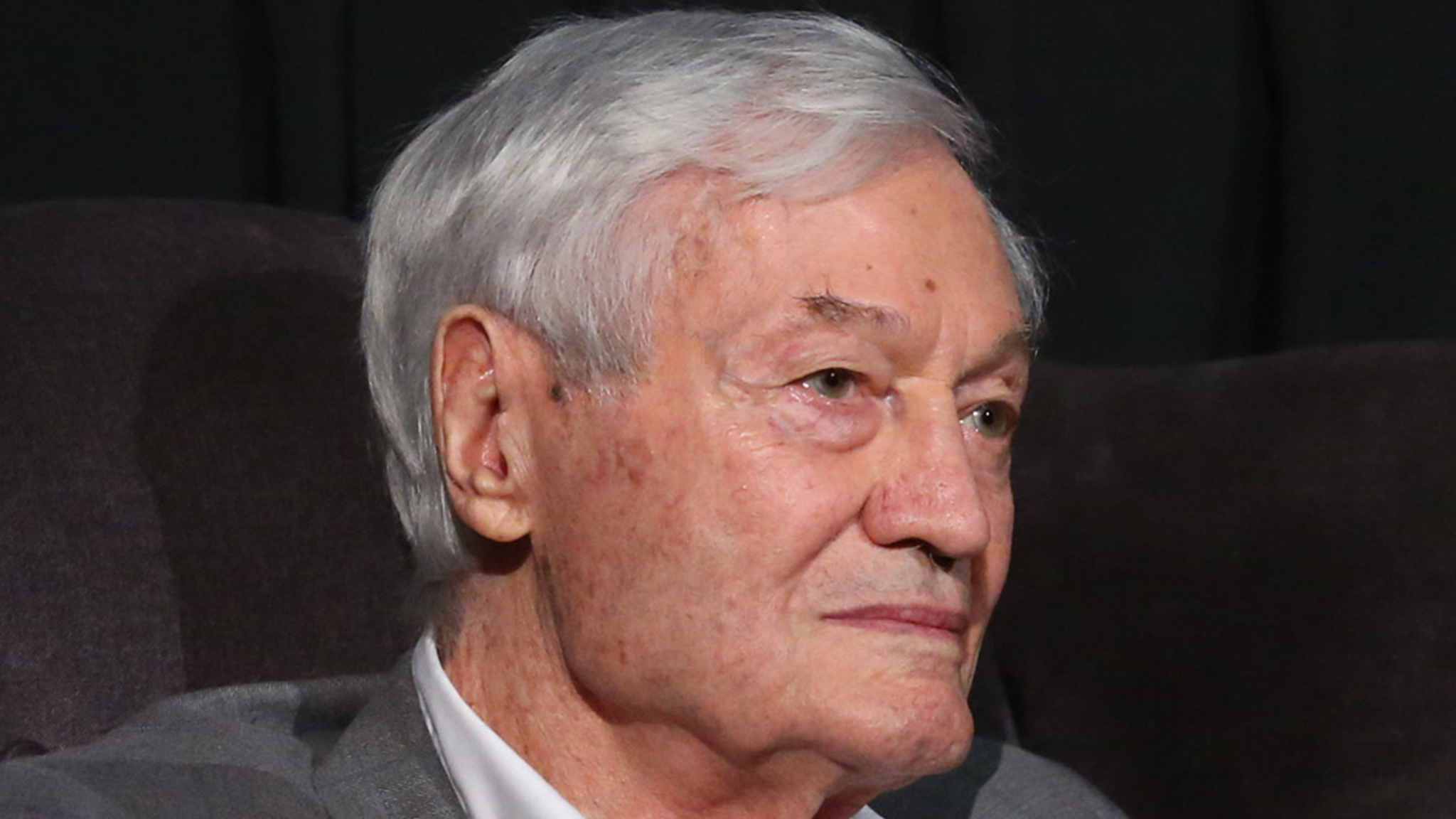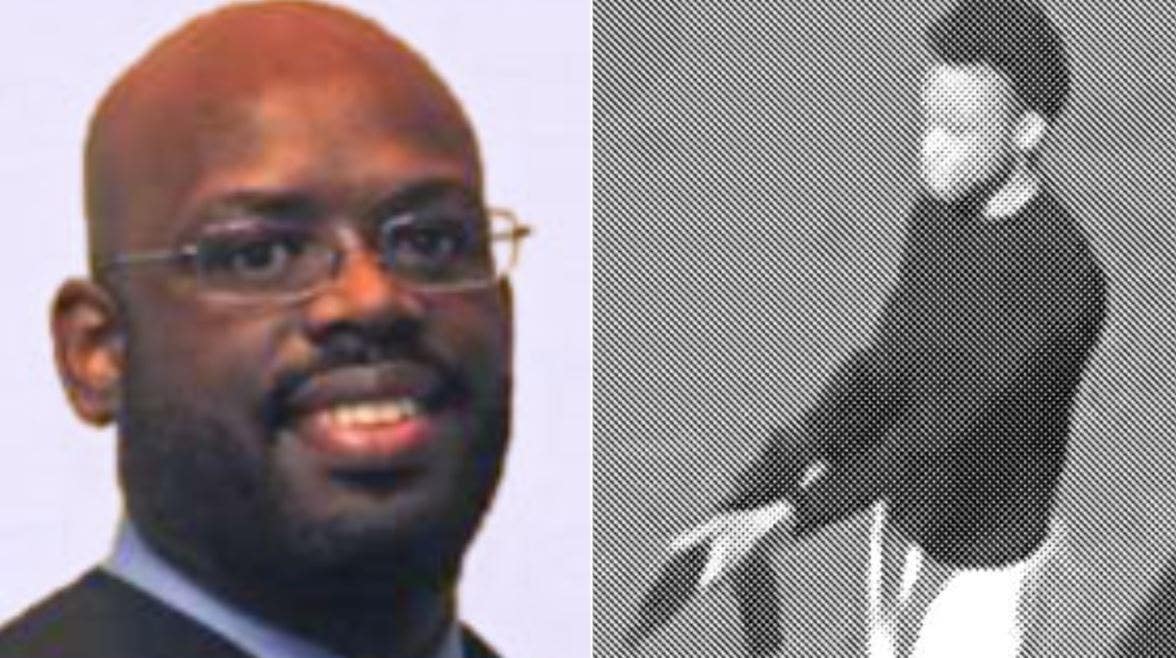Lifestyle
The Louvre Museum looks to rehouse the 'Mona Lisa' in its own room — underground

Visitors observe the painting the Mona Lisa by Italian artist Leonardo da Vinci on display in a gallery at Louvre on May 19, 2021 in Paris, France.
Marc Piasecki/Getty Images
hide caption
toggle caption
Marc Piasecki/Getty Images

Visitors observe the painting the Mona Lisa by Italian artist Leonardo da Vinci on display in a gallery at Louvre on May 19, 2021 in Paris, France.
Marc Piasecki/Getty Images
The room which houses the Mona Lisa at the Louvre Museum in Paris was last renovated only five years ago, in 2019.
But the museum is now already looking at making further improvements.
In an interview with French broadcaster France Inter, excerpts of which are available on social media, the Louvre’s director, Laurence des Cars, said her institution is now looking at upgrading both the conditions surrounding Leonardo da Vinci’s iconic Renaissance painting, as well as the overall visitor experience.
“I place it at the heart of my mission as the director to better welcome the public. And it’s always frustrating when our visitor experience is not quite up to par — as is the case, obviously, with the Mona Lisa,” said des Cars in the France Inter interview on Friday. “So in collaboration with the Ministry of Culture, we are thinking about making necessary improvements.”
According to a report this past week in the French newspaper Le Figaro, the plans involve moving the painting, which is worth more than $830 million by some estimates, into a separate underground room. Currently, the Mona Lisa shares a large room with other artworks.
The proposed upgrades, according to Le Figaro, would create two subterranean entry points for visitors: one for the Mona Lisa and the other for temporary exhibitions. The estimated renovation budget is 500 million euros (about $535 million). But the price tag could be affected by state budget cuts.

A visitor photographs the painting the Mona Lisa by Italian artist Leonardo Da Vinci on display in a gallery at the Louvre on May 19, 2021 in Paris.
Marc Piasecki/Getty Images
hide caption
toggle caption
Marc Piasecki/Getty Images

A visitor photographs the painting the Mona Lisa by Italian artist Leonardo Da Vinci on display in a gallery at the Louvre on May 19, 2021 in Paris.
Marc Piasecki/Getty Images
The Louvre is the world’s most-visited museum, bringing in 8-10 million people last year, and the Mona Lisa is by far its biggest attraction. The museum receives some 20-30,000 visitors daily.
But many museum-goers complain about waiting in line for hours, the stuffy conditions, and only getting to spend a few seconds viewing the painting, which is housed behind bulletproof glass.
One recent analysis of visitors’ online reviews of big museums and their most lauded artworks cited the Mona Lisa as “the world’s most disappointing masterpiece,” owing to the negativity of nearly 40% of reviews.

The Mona Lisa itself has also been the target of numerous attacks over the years. In January, climate change activists threw soup at the painting. The work itself was not damaged.
With Paris hosting the Olympic Games this summer, the Louvre is expecting a deluge of visitors. This past week the museum launched a special exhibition devoted to the origins of the global sports event.

Lifestyle
In honor of Mother's Day, here's 'Mother Play' — which gestated for 40 years

Playwright Paula Vogel is known not just for her work on Broadway — but for the generations of famous playwrights whose careers she has nurtured. Above, Jessica Lange in Paula Vogel’s Mother Play.
Joan Marcus/Second Stage
hide caption
toggle caption
Joan Marcus/Second Stage

Playwright Paula Vogel is known not just for her work on Broadway — but for the generations of famous playwrights whose careers she has nurtured. Above, Jessica Lange in Paula Vogel’s Mother Play.
Joan Marcus/Second Stage
To most of the public, Paula Vogel is best known for her moving, highly theatrical plays, among them How I Learned to Drive, Indecent and her latest work, Mother Play, starring Jessica Lange and up for several Tony Awards. But since 1984, she has taught scores of younger playwrights – first at Brown University, then at Yale.
“I love teaching as much as I love writing,” said Vogel. “So, this is, actually, for the last 40 years, has been something of a juggling act, because I always miss doing the other one.”
Over the years, her former students have won Tony Awards and Pulitzer Prizes and have been produced on and off Broadway.
“I wanted my students to get on Broadway before I did,” Vogel said. “I wanted my students to get produced at theater companies that I would never be produced in. And, you know, I always think of this as kind of one stop shopping; come in as an emerging playwright and leave the room as my colleague.”
“One of the first things she said, the first day I met her, was, ‘When a door opens for you, you hold it open and you let one other person through,’” said Pulitzer Prize-winning playwright Quiara Alegría Hudes, perhaps best known for writing the script and screenplay for In the Heights. “And that’s her. Except for, she’s really holding the door open and like, hundreds of people are coming through. She teaches you about the ethics; not just playwriting structure and style, but the ethics of living a life as a writer, as an artist. She models that.”
A lifelong mentor

“I wanted my students to get on Broadway before I did,” says playwright and professor Paula Vogel.
Second Stage
hide caption
toggle caption
Second Stage

“I wanted my students to get on Broadway before I did,” says playwright and professor Paula Vogel.
Second Stage
Vogel, who grew up in the Washington, D.C., area, frequently writes out of personal experience – sometimes painful personal experience. Her breakout play was The Baltimore Waltz, which dealt with her brother’s dying of AIDS.
MacArthur Grant-winning playwright Sarah Ruhl said she studied with Vogel at a particularly vulnerable time in her life.
“I met Paula when I was 20, and my father had just died of cancer, and I was back at Brown and I was having a little trouble focusing,” Ruhl said. “And Paula really understood how grief shapes an artist, and, also how to help artists out of that muddle and into their work.”
In fact, Ruhl’s breakout play, Euridyce, sends the title character to Hades where she meets her dead father.

When two-time Pulitzer Prize-winner Lynn Nottage first met Vogel, she was planning to go to journalism school and didn’t realize that playwrighting was a career path for women.
“I was taking a playwriting seminar class, and she walked in and she was still a young, ambitious playwright figuring out how to teach playwriting,” said Nottage. “And I found her to be warm and generous and nurturing and encouraging and really inspirational in ways that fed my spirit.”
Her former students said it wasn’t just their spirits being fed. “She would take me to this place, Café Zog in Providence on Wickenden street and we’d have a cookie,” Ruhl said. “And, you know, she would feed her writers.”
They still meet for the occasional cookie. Or drink.
Lynn Nottage recalled that when she and Vogel made their Broadway debuts in 2017, they frequently met for drinks, because they felt they weren’t getting the support from the media and the Broadway community that they had hoped for.
“So, I think that having an ally and having a sister and having someone, literally, I could hold hands with and, you know, fight the powers-that-be, really emboldened me and allowed me to survive that.”

She added that although Vogel is a kind person, she is also “a badass…she also does have that side that demands to be heard and demands to be seen and that is an advocate and fighter for other writers’ voices.”
“There are no classroom boundaries, I think, around the mentorship that Paula creates and fosters,” said Ruhl. “It is lifelong.”
Vogel and her wife, Anne Fausto-Sterling, officiated at Ruhl’s wedding.
“I’ve actually officiated at a number of former students’ weddings, which, has become one of my hobbies,” Vogel said. “I love doing it.”
All three playwrights have become teachers themselves, and friends with one another. Hudes said she and Vogel share early drafts of their plays. “I have read Mother Play. And I think it’s her best play, and I don’t say that lightly. I am in awe of her body of work.”
The birth of Mother Play

Jim Parsons and Jessica Lange in Mother Play.
Joan Marcus
hide caption
toggle caption
Joan Marcus
Yet while Vogel may have become a nurturing teacher and colleague, Mother Play makes it clear that her own mother wasn’t particularly nurturing.
Jessica Lange plays the fictional version. “In the play, Phyllis makes some absolutely unforgivable decisions and then really pays the price for it, lives with those consequences for the rest of her life,” Lange said.
Vogel said Mother Play had a 40-year gestation period and it’s her homage to the many mother plays written by men. “
“When I was sitting at the dinner table with my mother, my brother and I could quote Glass Menagerie at each other, have a little private joke, and get through dinnertime,” Vogel said. “But I was curious as to what is the difference when women write mother plays.”
Set over 40 years, her mother play is written with empathy and forgiveness. The audience sees the struggles this single mother goes through, with money, with alcohol, with her gay children, with loneliness. And all within the context of the constraints of the time period in which she lived.
“Maybe Paula existed in sort of resistance and rebellion to her mother,” mused Lynn Nottage. “You think about the path that Paula has taken is that she never had biological children of her own, but she has this immense, beautiful family in the theater world. And that’s really a blessing.”
Lifestyle
King of B-Movies Roger Corman Dead at 98

Roger Corman, the legendary filmmaker of low budget horror flicks who launched the Hollywood careers of Francis Ford Coppola, Martin Scorsese and many others, has died.
The so-called “King of the B-Movies” passed away Thursday at his home in Santa Monica, CA with his family surrounding him. His daughter Catherine confirmed his death, but did not disclose a cause.
Waiting for your permission to load the Instagram Media.
In a statement posted to Instagram Saturday night, Roger’s family described him as “generous, open-hearted and kind to all those who knew him,” as well as a “devoted and selfless father.”
His family noted that when Corman was once asked how he wanted to be remembered, he replied, “I was a filmmaker, just that.”
He’ll get that wish, no doubt. Throughout his fabled career beginning in 1954, Roger directed and/or produced more than 300 films on tight budgets, as low as $29,000. Most of his blood-splattered movies were brought to life with producer Samuel Z. Arkoff for American International Pictures.
Over the years, he developed a huge cult following as his many fans relished watching his cheap, no frills movies, like “A Bucket of Blood” (1959), “The Masque of the Red Death” (1964), “The Wild Angels” (1966) and “The Little Shop of Horrors” (1960).
Roger was also responsible for giving some of Hollywood’s biggest filmmakers their start. Among his director proteges were Jonathan Demme, Peter Bogdanovich and Ron Howard, along with Coppola and Scorsese.
In addition, Jack Nicholson had Roger to thank for giving him his first movie part as the lead in “The Cry Baby Killer” (1958). Jack featured in a total of 8 Corman films.
He is survived by his wife likes of Bruce Dern, Peter Fonda and Boris Karloff. He worked well into his 90s … making his final movie,s “The Jungle Demon” in 2021.
Roger is survived by his wife Julie and his daughters Catherine and Mary.
He was 98.
RIP
Lifestyle
Roger Corman, The B-Movie Legend Who Launched A-List Careers, Dies At 98

Cult film director Roger Corman often came up with titles before he came up with plots. His 1957 movie Attack of the Crab Monsters is one example — “I had no story,” Corman told NPR’s Renee Montagne in 2010.
Movie Poster Image Art/Getty Images
hide caption
toggle caption
Movie Poster Image Art/Getty Images
Over the course of his half-century long career, Roger Corman filled America’s drive-ins with hundreds of low-budget movies. They had titles like Sharktopus, Teenage Doll and The Terror. The trailers — and titles — were often better than the movies themselves.
But Corman was also a major figure in American independent film. The directors and actors who worked with him at the beginnings of their careers are a veritable who’s who: Robert De Niro, Martin Scorsese, Jonathan Demme, Francis Ford Coppola.

“I think the task of the filmmaker is to break through and hit that horror that still remains in the unconscious mind,” Corman said. “And there’s a certain amount of catharsis there. He’s pictured above in 2009.
Kevork Djansezian/Getty Images
hide caption
toggle caption
Kevork Djansezian/Getty Images

“I think the task of the filmmaker is to break through and hit that horror that still remains in the unconscious mind,” Corman said. “And there’s a certain amount of catharsis there. He’s pictured above in 2009.
Kevork Djansezian/Getty Images
Corman died Thursday at his home in Santa Monica, California, according to a statement released Saturday by his wife and daughters. “He was generous, open-hearted and kind to all those who knew him,” the statement said. “When asked how he would like to be remembered, he said, ‘I was a filmmaker, just that.’” He was 98.
Corman was educated at Stanford and Oxford Universities before he became the dean of grindhouse. Back in 1990, Corman told NPR about making his first film, Monster from the Ocean Floor. It was the early 1950s, and Corman had read in the newspaper about a company that had invented a miniature submarine.
“I finished breakfast, called them up, said I was an independent filmmaker and would be interested in having their submarine in my picture,” he recalled.
Putting free stuff in the flicks he pumped out for cheap became Corman’s trademark — along with little-known starlets in even littler outfits, filmed on the littlest of budgets. Corman’s thrift was legendary.

Dick Miller acted in dozens of Corman films, including the 1955 Western Apache Woman. “I played an Indian in my first picture and about halfway through [Corman] asked me … Would you like to play a cowboy?” Miller remembered in a Fresh Air interview in 2004. “I said, Doing another movie already? He says, No, in the same movie. So I ended up playing a cowboy and an Indian in my first movie.”
Corman released as many as eight pictures a year — a breakneck pace that rivaled even major studios. Once, as a joke, he borrowed a set (for free, of course) and shot a movie in two days and one night. That hastily assembled movie was the original, black and white, Little Shop of Horrors.
“Possibly the fast pace, the insane schedule, brought something to the picture that made it the more-or-less cult film it became,” Corman said.

Some of Hollywood’s biggest stars got their starts working on Corman films. Above, Salli Sachse and Peter Fonda are pictured on the set of The Trip, a 1966 film written by Jack Nicholson and directed by Corman.
AP
hide caption
toggle caption
AP

Some of Hollywood’s biggest stars got their starts working on Corman films. Above, Salli Sachse and Peter Fonda are pictured on the set of The Trip, a 1966 film written by Jack Nicholson and directed by Corman.
AP
Of course, it didn’t hurt that the film featured a young Jack Nicholson playing a masochistic dental patient.
Nicholson showed up in a raft of Corman pictures, including a relatively well-regarded series based on works by Edgar Allan Poe, all starring Vincent Price.
But Corman was mostly synonymous with schlock — there was The Student Nurses in 1970 (followed by several subsequent nurse-focused films), the 1966 biker gang movie The Wild Angels, and 1975’s homicidal hot rod movie Death Race 2000.
“The drivers are scored not only on how fast they can drive, and how many other drivers they could hit, but also how many pedestrians they could kill,” Corman bragged. “Now that was the key. The picture was the biggest success we had, ever, and it led to all kinds of jokes that entered our era.”
Corman received an honorary Oscar in 2009 for producing and directing more than 300 films and fostering the careers of Ron Howard, John Sayles, Sylvester Stallone and James Cameron.
“Probably all of his movies combined would not have cost as much as Avatar,” Cameron told NPR in 2010.

Corman produced Cameron’s first full-length feature, 1981’s Piranha II: The Spawning, and taught him an essential lesson: “Your will is the only thing that makes the difference in getting the job done …” Cameron said. “It teaches you to improvise, and, in a funny way, to never lose hope. Because you’re making a movie, and the movie can be what you want it to be.”
The movies Corman willed into being are their own loopy, glorious world of teenage cavemen, X-ray eyes and humanoids from the deep. His 300-some movies barely even rose to the level of camp. But many of Hollywood’s most respected directors have at least one Corman credit buried in their resumes. And by teaching so many people how to deliver on-budget and on-schedule, Corman was arguably one of the most influential figures of American film.
In 1964 he married Julie Halloran, a UCLA graduate who also became a producer. He is survived by his wife Julie and children Catherine, Roger, Brian and Mary.
-

 Education1 week ago
Education1 week agoVideo: President Biden Addresses Campus Protests
-

 News1 week ago
News1 week agoSome Florida boaters seen on video dumping trash into ocean have been identified, officials say
-

 World1 week ago
World1 week agoUN, EU, US urge Georgia to halt ‘foreign agents’ bill as protests grow
-

 World1 week ago
World1 week agoEuropean elections: What do voters want? What have candidates pledged?
-

 Movie Reviews1 week ago
Movie Reviews1 week agoSabari Movie Review: Varalaxmi Proves She Can Do Female Centric Roles
-

 News1 week ago
News1 week agoWhistleblower Joshua Dean, who raised concerns about Boeing jets, dies at 45
-

 Politics1 week ago
Politics1 week agoAustralian lawmakers send letter urging Biden to drop case against Julian Assange on World Press Freedom Day
-

 World1 week ago
World1 week agoBrussels, my love? Champage cracked open to celebrate the Big Bang

















